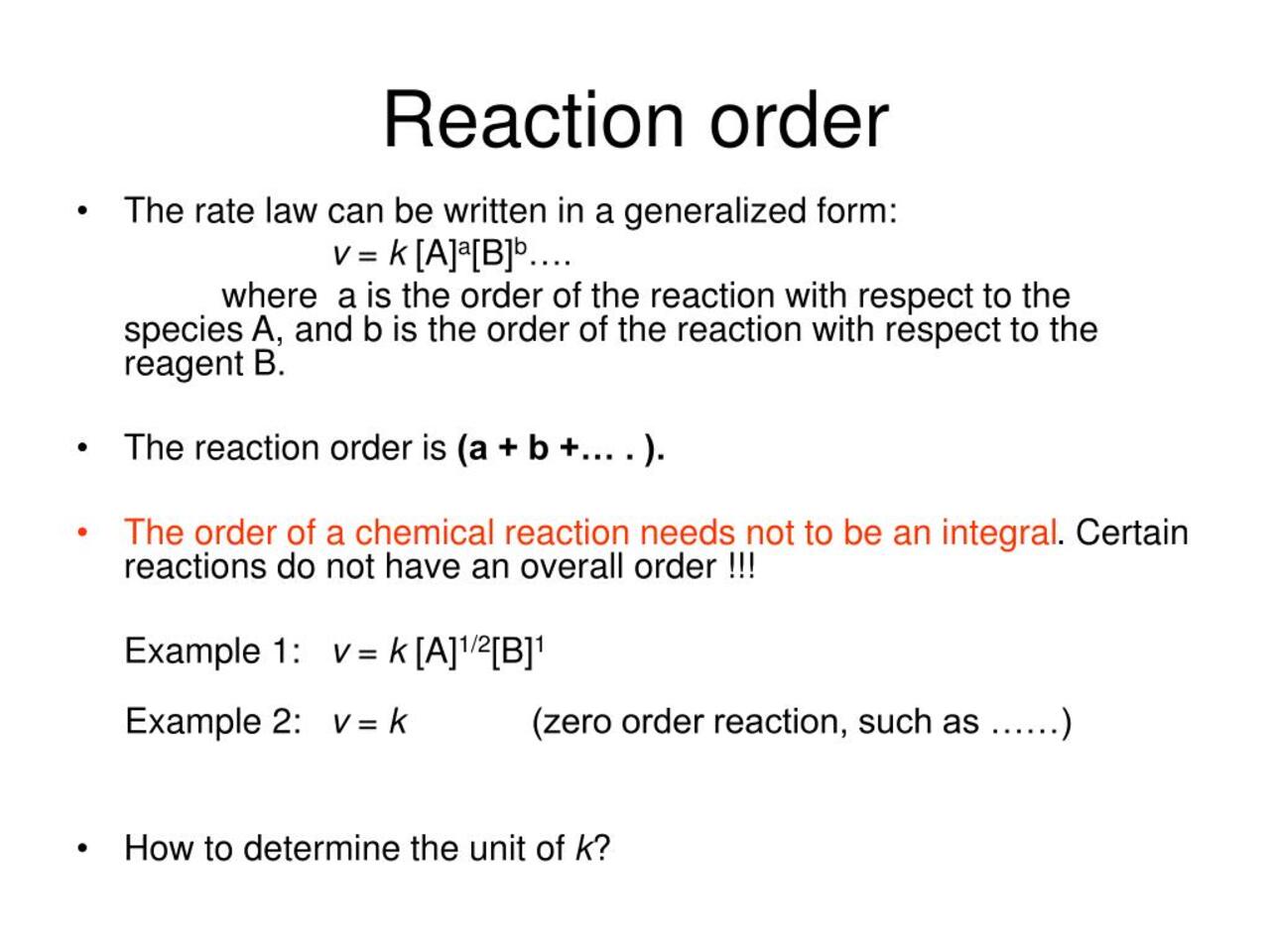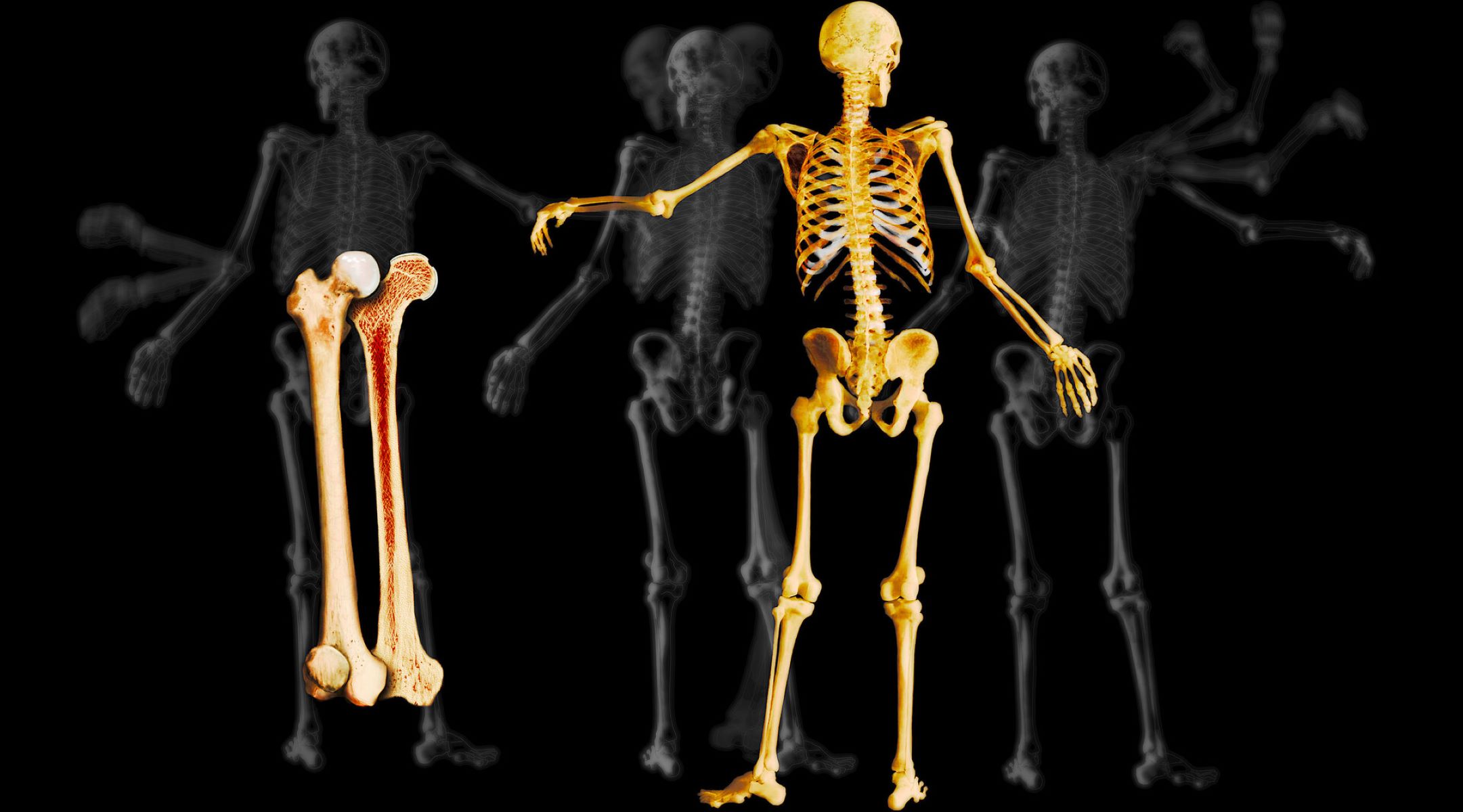
Reaction order is a fundamental concept in chemistry that describes how the rate of a chemical reaction is influenced by the concentration of reactants. Understanding reaction order is crucial for predicting and controlling the rate of chemical reactions, which has significant implications in fields such as pharmacology, environmental science, and material synthesis.
In this article, we will explore 11 fascinating facts about reaction order that highlight its importance and provide insights into its intricacies. From explaining the different types of reaction orders to exploring the factors that affect reaction rates, we will delve into the world of reaction kinetics and uncover the fascinating dynamics behind chemical reactions.
So, whether you’re a chemistry enthusiast, a student studying the subject, or simply someone curious about the fundamental processes that govern chemical transformations, join us as we unravel the mysteries of reaction order.
Key Takeaways:
- Understanding reaction order helps chemists predict and control the speed of chemical reactions, leading to advancements in science and industry.
- Reaction order determines the rate of a reaction, influences its efficiency, and provides insights into the steps and intermediates involved in the reaction mechanism.
The First Fact: Reaction Order Defines the Mathematical Expression of a Rate Law
Reaction order determines the mathematical relationship between the concentrations of reactants and the rate at which the reaction proceeds. It is represented by the exponents in the rate law equation. For example, a reaction with a rate law of rate = k[A]^2[B] has a reaction order of 2 with respect to A and 1 with respect to B.
The Second Fact: Reaction Order can be Zero, Positive, or Negative
The reaction order can be zero, positive, or negative, depending on the effect of reactant concentration on the rate of the reaction. A zero order means that the rate is independent of reactant concentration, while a positive order indicates that the rate increases as the concentration of the reactant increases. On the other hand, a negative order implies that the rate decreases as the concentration of the reactant increases.
The Third Fact: Reaction Order Determines the Shape of Rate vs. Concentration Graph
The reaction order dictates the shape of the plot between the reaction rate and the concentration of the reactant. For a zero-order reaction, the graph is a horizontal line, indicating a constant rate. A first-order reaction exhibits a linear relationship between the rate and concentration, while a second-order reaction displays a curved graph.
The Fourth Fact: Reaction Order can be Determined Experimentally
Experimental methods such as the method of initial rates or the integrated rate equations can be used to determine the reaction order. By varying the initial concentrations of reactants and measuring the rate of the reaction, the reaction order can be deduced.
The Fifth Fact: Reaction Order Determines the Half-life of a Reaction
The reaction order influences the time required for a reaction to reach half of its initial concentration. For a zero-order reaction, the half-life remains constant throughout the reaction. In contrast, for first-order and second-order reactions, the half-life changes with the initial concentration of the reactant.
The Sixth Fact: Reaction Order Relates to the Mechanism of a Reaction
The reaction order is closely connected to the mechanism by which the reaction takes place. The rate-determining step in a reaction mechanism often corresponds to the reaction order of the overall reaction. Understanding the reaction order provides insights into the steps and intermediates involved in the reaction mechanism.
The Seventh Fact: Reaction Order Influences Reaction Rate and Efficiency
The reaction order directly affects the rate at which a reaction proceeds. By manipulating the reaction order through changing the concentration ratios of reactants, the rate of a reaction can be controlled. This understanding allows chemists to optimize reaction conditions for increased efficiency and productivity.
The Eighth Fact: Reaction Order Varies with Temperature
Temperature plays a crucial role in influencing the reaction order. The reaction order may change as the temperature is altered, indicating that the reaction mechanism is temperature-dependent. This phenomenon is often observed in complex reactions involving multiple steps.
The Ninth Fact: Reaction Order is Not Affected by Stoichiometry
The reaction order remains constant regardless of the stoichiometry of the reaction. It depends solely on the rate law equation, which is determined experimentally. Thus, even if the coefficients of reactants change in a balanced chemical equation, the reaction order remains the same.
The Tenth Fact: Reaction Order Can Help Predict Reaction Kinetics
By knowing the reaction order, it is possible to make predictions about the rate and progression of a reaction. This information is crucial in various applications, such as industrial production, drug synthesis, and environmental studies. Reaction order allows scientists to understand and control chemical reactions more effectively.
The Eleventh Fact: Reaction Order is Essential for Rate Equation Determination
The reaction order is a vital factor in deducing the rate equation of a reaction. By combining experimental data with the insights gained from reaction order, scientists can derive accurate rate equations that describe the relationship between reactant concentrations and reaction rates.
As you can see, the 11 fascinating facts about reaction order provide insight into the fundamental principles that govern chemical kinetics. Understanding reaction order allows chemists to understand, control, and optimize chemical processes, leading to advancements in various fields of science and industry.
Conclusion
In conclusion, reaction order is a crucial concept in chemistry that determines the rate of a chemical reaction. It provides valuable insights into the relationship between reactant concentrations and reaction rates. The order of a reaction can vary from zero to first, second, or even more complex orders. Understanding reaction order allows scientists to predict the behavior of chemical reactions and design more efficient processes.Through this article, we have explored eleven fascinating facts about reaction order. We have learned that reaction order can be determined experimentally using the method of initial rates. We have also discovered that reaction order is not related to the stoichiometric coefficients of the balanced chemical equation. Moreover, we have explored the concepts of rate constant, half-life, and the effect of temperature on reaction order.By delving into the factors influencing reaction order and exploring various examples, we have gained a comprehensive understanding of this fundamental concept in chemistry. It lays the foundation for further explorations in reaction kinetics, biochemical reactions, and other fields of chemical research. Reaction order serves as a powerful tool for scientists to unravel the mysteries of how reactions occur and develop innovative solutions to real-world problems.
FAQs
1. What is reaction order?
Reaction order is a measure of how the rate of a chemical reaction changes with respect to changes in the concentration of reactants.
2. How is reaction order determined?
Reaction order is typically determined experimentally by studying the initial rates of the reaction at different concentrations of the reactants.
3. Is reaction order related to the stoichiometric coefficients in a balanced chemical equation?
No, reaction order is independent of the stoichiometric coefficients. It is determined solely by the experimental observations.
4. Can a reaction have a zero order?
Yes, a reaction can exhibit zero order if the rate of the reaction is independent of the concentration of the reactants.
5. What is the significance of the rate constant in reaction order?
The rate constant represents the proportionality constant between the concentrations of reactants and the rate of the reaction. It is specific to a particular reaction at a given temperature.
6. How does temperature affect reaction order?
Temperature has a significant effect on reaction order. Generally, an increase in temperature accelerates the reaction rate, changing the overall order of the reaction.
7. How is reaction order useful in real-world applications?
Reaction order is essential in various fields such as chemical engineering, pharmacology, and environmental sciences. It helps in designing efficient processes, optimizing reaction conditions, and understanding the kinetics of complex reactions.
Reaction order's fascinating facts merely scratch surface of chemical kinetics. Dive deeper into chemical kinetics by exploring rate constant's 14 fascinating facts. Rate law's 10 fascinating facts provide additional insights into reaction rates. Uncover more about rate constant through its own set of 14 fascinating facts.
Was this page helpful?
Our commitment to delivering trustworthy and engaging content is at the heart of what we do. Each fact on our site is contributed by real users like you, bringing a wealth of diverse insights and information. To ensure the highest standards of accuracy and reliability, our dedicated editors meticulously review each submission. This process guarantees that the facts we share are not only fascinating but also credible. Trust in our commitment to quality and authenticity as you explore and learn with us.


